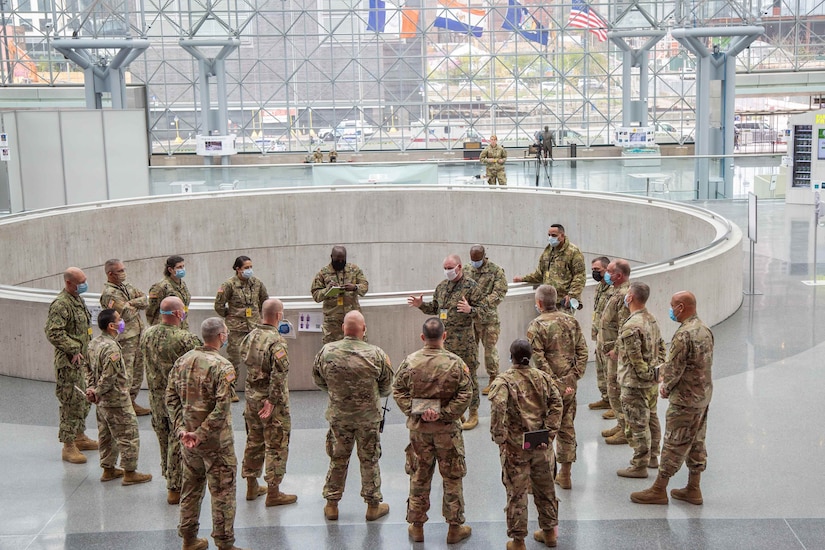May 4, 2020 | BY Jim Garamone , DOD News
Defense Secretary Dr. Mark T. Esper discussed the immediate
operations against COVID-19 and the second order of effects the pandemic will
have on the U.S. military during a Brookings Institution webinar.
The secretary gave Brookings senior fellow Michael O'Hanlon
an overview of the DOD's actions during the pandemic during today's virtual
conversation, saying he is very proud of the role that more than 62,000 service
members and Defense Department civilians have played so far.
Esper issued his first guidance on the coronavirus response
in January, and he activated the global pandemic plan Feb. 1. "We've
remained ahead of the curve at every turn, and I'm very proud of what we've
done at this point in time as we start to see some light at the end of the
tunnel."
He noted the deployment of the Navy hospital ships USNS
Comfort and USNS Mercy to New York and Los Angeles, respectively, and the more
than 45,000 National Guardsmen at work in all states, territories and the
District of Columbia. "We have thousands of medical professionals,
doctors, nurses, respiratory therapists [and] others who are out on the
frontlines," he said. He also noted the more than 2,000 Army Corps of
Engineers personnel working to expand hospital capacity.
Esper stressed that the U.S. military continues to work with
allies and partners around the world.
But there are effects beyond the sickness brought on by the
pandemic, and DOD officials are grappling with them, the secretary noted.
"We're very cognizant of the impacts that we see on the force and plotting
the way ahead," Esper said. "DOD has been very busy using all of our
resources and our researchers to work hard on therapeutics and vaccines, … but
we're also cognizant about the impacts that this COVID-19 may have on the
force."
So far, the pandemic has had a low impact on readiness,
Esper said. "But over time, we are anticipating what could be a greater
impact … if we don't see a change in the trajectory … of the virus or how we
adapt ourselves," he added.
The military has 2 million service members; fewer than 5,000
have been infected and fewer than 100 have been hospitalized. This is a
testament to the overall health of the force and to them following CDC guidance,
the secretary said. "So, at this point in time, we are in pretty good
shape," he said.
From an organization standpoint, the secretary said he is
worried about the long-term impacts on recruiting and basic military training.
It carries over to training, the secretary said. Generally,
the smaller the unit, the easier it is to preserve the integrity of the unit
and training, he explained. Platoons are easier to test and quarantine, if
needed, than brigades, destroyers are easier than aircraft carriers, and so on,
Esper said.
"As you get higher in terms of the size and scale and
scope of the exercise, the more challenging it becomes, and the more risk you
absorb, that you may get soldiers, sailors, airmen and Marines infected,"
he said.

No comments:
Post a Comment